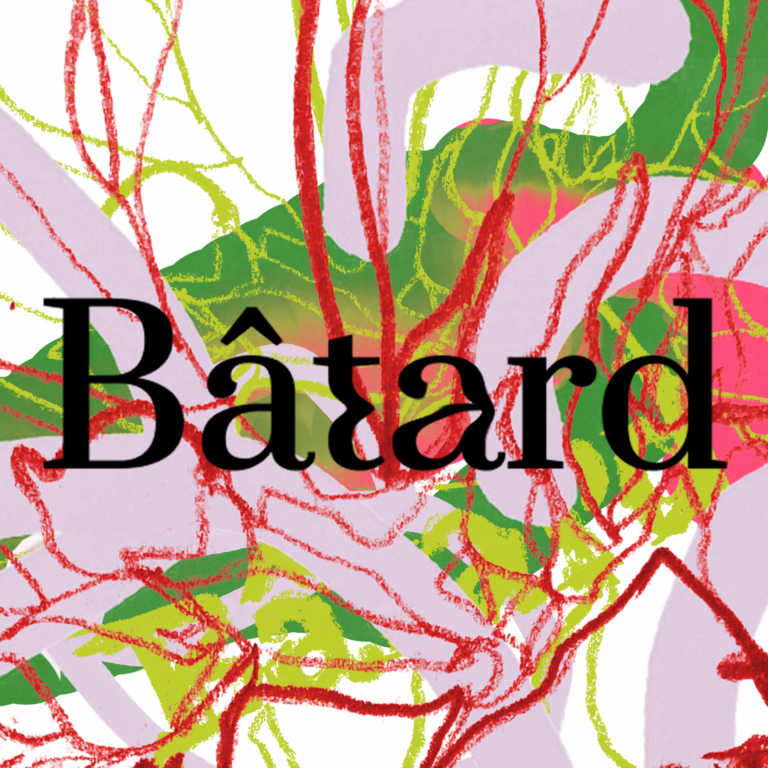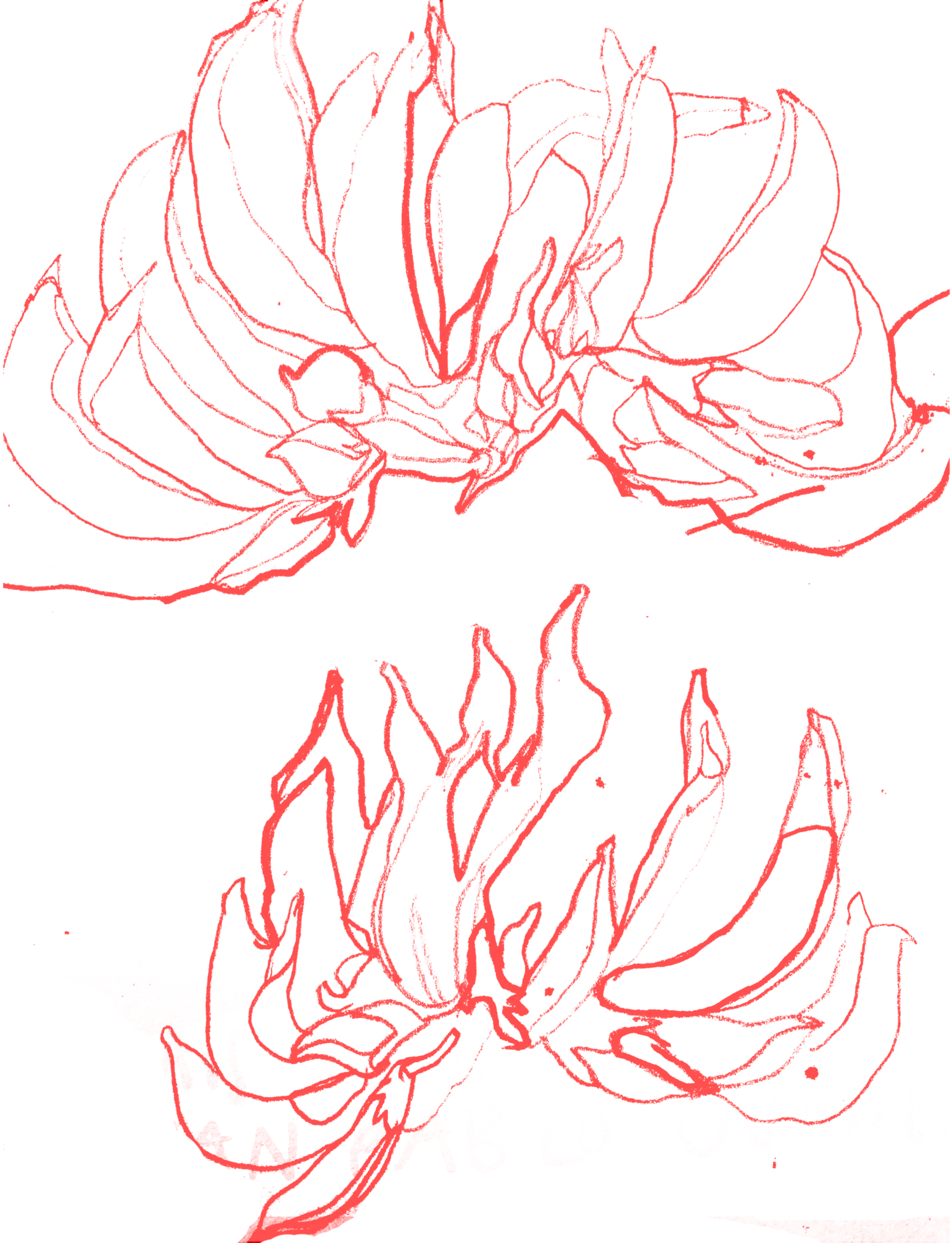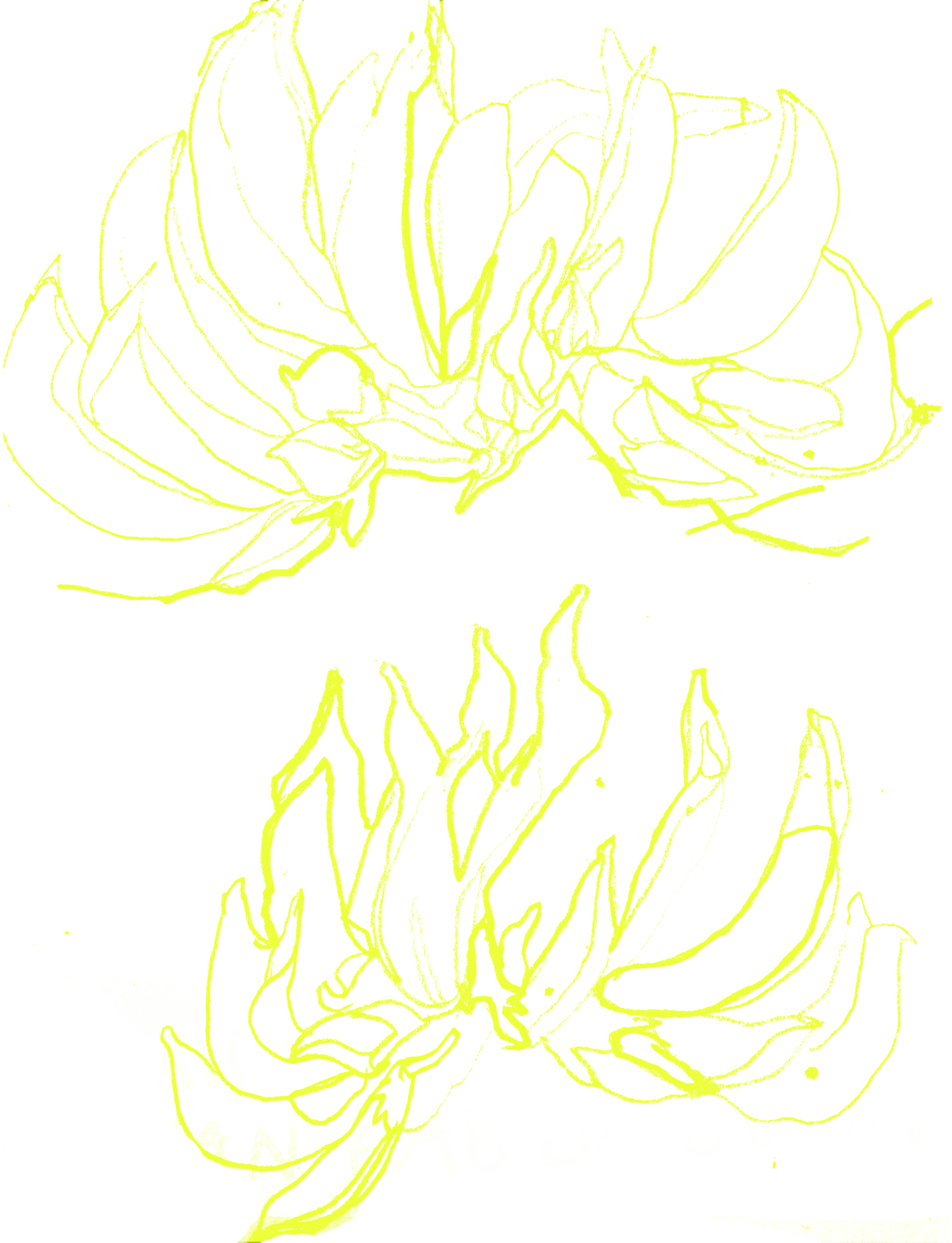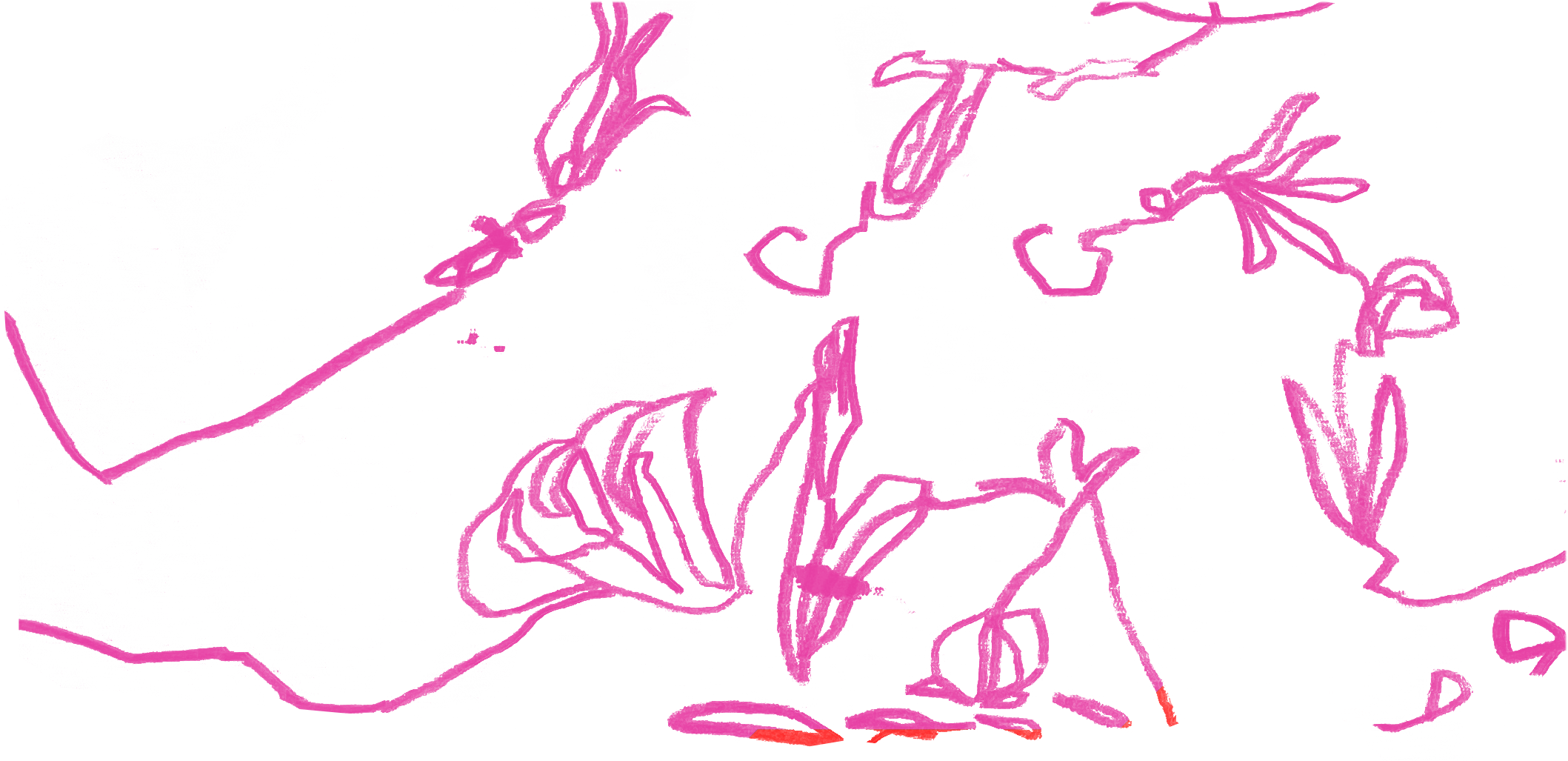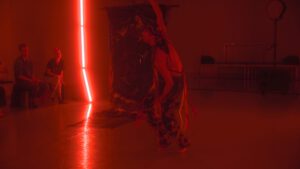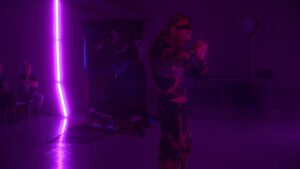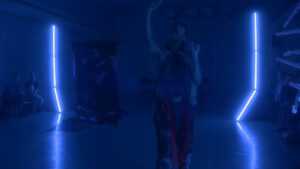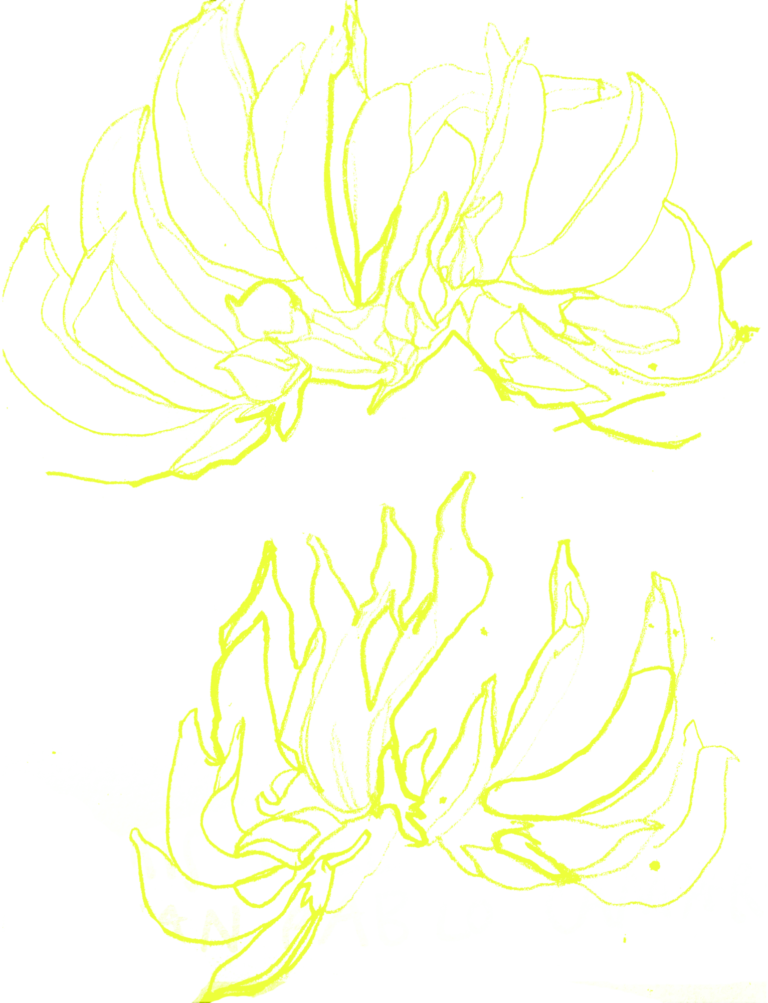

“several attempts at braiding my way home”
15.04* at 7pm & 16.04 at 9pm // tickets
Shifting between labor and speculative proposals ”several attempts at braiding my way home” insists on fiction as a tool for quaking potential and finding opportunities for recovery and belonging. The performance swims with the Clymene dolphins who defy understandings of heritage. It listens to the walruses who trust their hair for navigation. ”several attempts at braiding my way home” is a collection of strategies for creating home in an afro-nordic landscape. Braiding hair, fusing bones, growing fins. It is a heatwave and a longing for home.
42 min.
~Global Majority/BIPOC separatist evening
The show on the first evening (15th April) is a separatistic evening for people of the global majority/BIPOC. So please only book that evening if you identify with those terms. The show on the 16th of April is open for all.
We, Adam and Amina Seid Tahir, see how the terms BIPOC and people of color are less fortunate in their attempts of combating white supremacist and imperialistic ideologies, since they form in relation to whiteness (those ”not of color”) and therefore keeps whiteness as the norm. We rather use the term people of the global majority since we aren’t interested in identifying in relation to whiteness or white supremacy.
The term Global Majority was coined by Rosemary Campbell-Stephens. ”Global Majority refers to people who are Black, Asian, Brown, dual-heritage, indigenous to the global south, and or have been racialised as ‘ethnic minorities’.” 1 This term was created for people of the global majority to not have to identify in relation to whiteness and to emphasize the fact that these groups make up the majority of the world’s population, specifically 80%.
The reason for choosing to use the term BIPOC despite this, is because we’re aware that the term people of the global majority hasn’t received as widespread attention yet. And since our main goal for this showing is to welcome our siblings from the global majority for a showing without the presence of a white colonial gaze, we choose to use the term that seems to be most commonly used in this festivals locality.
1. “Global Majority; Decolonising the language and Reframing the Conversation about Race” by Rosemary Campbell-Stephens, 2020
Iniciated and performed by: Adam Seid Tahir
Created by: Adam Seid Tahir & Amina Seid Tahir
Dramaturg: Lydia Östberg Diakité
Music: Crystallmess
Hair-costume: Malcolm Marquez
Costume: Amina Seid Tahir
Light: Jonatan Winbo
Pictures: Vladyslav Kamensky
Supported by Kulturrådet, Helge Ax:son Johnsons stiftelse, MARC &
Riksteaterns Produktionsresidens för dans 2021
Adam Seid Tahir:@adam.seidtahir
Amina Seid Tahir: @earth_sis
Lydia Östberg Diakité: @lydia_le_boss
Crystallmess: @crystallmess
Malcolm Marquez: @malcolm.marquez
Jonatan Winbo: @jonatanwinbo
 Amina Seid Tahir (She/Her) is a Swedish-Eritrean artist based in Stockholm who is currently doing a BA in fine arts at Konstfack. She works multidisciplinary with
Amina Seid Tahir (She/Her) is a Swedish-Eritrean artist based in Stockholm who is currently doing a BA in fine arts at Konstfack. She works multidisciplinary with
mediums such as video, sound, performance, installation, and music. Currently,
her work focuses on collective rest and healing through sound, video, braiding,
pillow making, performance for plants and separatistic resting groups for
BIPOCs. Manifesting spaces where dreams can work like seeds to grow futures.
She is also interested in Eritrean mythology and plant medicine, creating stories
inspired by histories and myths.
![]() Adam Seid Tahir (he/she/they) is a choreographer and dancer based in
Adam Seid Tahir (he/she/they) is a choreographer and dancer based in
Stockholm. Their work encompasses dancing, performing, choreographing,
writing, coding and creating work for physical platforms and cyberspace.
Adam is interested in the meeting of blackness, sensor based technology,
braiding, 3D animation and somatic work and uses those as tools to manifest
alternate realities. Recently, she has become interested in creating affective and
emotional machines while she also continuous to be interested in modes of
facial expression from afro-american jazz and has been working with the stank
face through her latest work.
Adam is busy with decolonizing his practice and disorienting it from cis-hetero-
normativity. They intersect digital and physical rituals for divination to guide their process of creating work.
”Embrace” (2020, performance) was created together with Meleat Fredriksson
and Lydia Östberg Diakité and premiered at Dubrovnik Summer Festival 2020.
”several attempts at braiding my way home” (2021, performance) was created
with Amina Seid Tahir and premiered at My Wild Flag 2021 in Stockholm. Its
sibling piece ”an attempt at braiding my way home” (2021, video installation)
premiered at SITE Specific Festival in Stockholm 2021.
Besides performing and creating choreographic work Adam also works as a
Web Developer. They have also contributed to the writing of a book on treating
autoimmune illness with food, based on their experiences with ankylosing
spondylitis.
